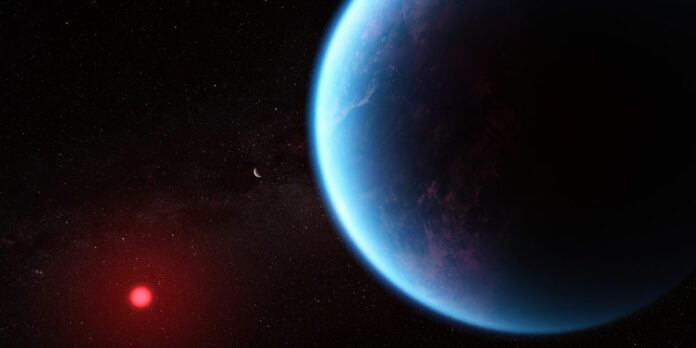HUNTSVILLE — Scientists have made claims of a discovery of a distant planet that has water and oceans. The researchers have focused their research on a massive planet that is light years in distance from Earth using the James Webb Space Telescope, according to NASA.
This is the first time that carbon-based molecules have been discovered in the atmosphere of an exoplanet in the habitable zone. However, it is not clear whether the planet would sustain life, according to a source quoted in a story published by The Washington Post.
This discovery is one of many scientific advances that have been made with the James Webb Space Telescope, which was developed by several agencies including the Marshall Space Flight Center, Goddard Space Flight Center, and Johnson Space Center, as well as the University of Alabama in Huntsville.
The space telescope is designed to conduct infrared astronomy. The Webb Telescope succeeds the Hubble Space Telescope with greater resolution and more sensitive instrumentation. It was launched in December 2021.
Research scientists from the University of Cambridge made the announcement following their analysis of data from JWST, gazing at the planet 110 light years from Earth. The planet is known as K2-18 b and is 8.6 times as massive as Earth. The large planet orbits the cool dwarf star K2-18 and lies in the Leo constellation.
A first insight into the atmosphere of K2-18 b came from observations with the Hubble Space Telescope but the atmospheric composition has been a subject of debate.
The astronomers found methane and carbon dioxide in the atmosphere of K2-18 b, results that are “consistent with an ocean-covered surface underneath a hydrogen-rich atmosphere, the university said in a news release.
The discovery provides a glimpse into a planet unlike anything else in our Solar System, and raises interesting prospects about potentially habitable worlds elsewhere in the
universe, according to the university.
The same researchers studied K2-18 b in 2020 and 2021 and identified it as belonging to a new class of habitable exoplanets called ‘Hycean’ worlds which could accelerate the search for life elsewhere. This prompted them to take a more detailed look with JWST, Hubble’s successor.
Using JWST’s higher resolution instruments, the investigation has identified methane and carbon dioxide in a hydrogen-rich atmosphere on K2-18 b.
NASA said the team of researchers said also detected “another, weaker, signal” that could indicate the molecule called dimethyl sulfide, raising the prospect of biological activity on K2-18 b. On Earth, this molecule is only produced by life, emitted from phytoplankton in marine environments, according to NASA.
But the DMS detection is yet to be confirmed, and the team will follow up with further observations from the Webb telescope, according to the space agency.
It’s not the first time astronomers have seen signs of water on other planets. Evidence of water vapor has been found on an exoplanet roughly the size of Neptune about 120 light-years away.
Still, officials described the new revelations as a gateway to more insight on planets beyond Earth.
“These results are the product of just two observations of K2-18 b, with many more on the way,” said co-author and researcher Savvas Constantinou of the University of Cambridge.
Don’t miss out! Subscribe to our email newsletter to have all our smart stories delivered to your inbox.



